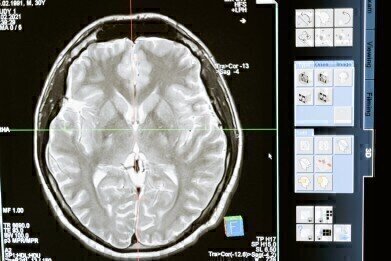News
If We Can 3D Print Brain Tissue, What Will Be Next?
Jan 28 2015
The potential of 3D printing is seemingly limitless. The ability to manufacture any object we so desire, simply by using digital blueprints and a state-of-the-art 3D printer, will offer huge and obvious benefits in pretty much every imaginable spectrum of business, science and life.
For example, the benefits of being able to precisely control every aspect of size, dimension and material of every minute component of a machine have already been demonstrated amply in the world of science. One such example can clearly be seen in the world of chromatography, where the ability to specifically design packed-bed columns has yielded very positive consequences. These consequences are explored more thoroughly in this article: The Effects of Bead Overlap on Performance of 3D Printed Packed Bed Columns.
Of course, most 3D-printed objects are constructed using materials such as plastic, paper, rubber or perhaps metal. However, the startling innovation of 3D printer bioink, pioneered back in March 2013, has held incredible advantages for the realms of healthcare and surgery.
Organ Construction
Fast forward 20 months and bio-printing forerunners Organovo released the first commercially-available human liver tissue, constructed completely from a 3D printer. Such tissue can be examined for reactions with new drugs or studied to learn more about its inner workings and frailties. Of course, the next logical step is to recreate tissue from the human body’s most powerful organ – the brain.
A tandem operation from Australian scientists at the University of Wollongong and St Vincent’s Hospital in Melbourne has sought to utilise stem cells to recreate actual human brain tissue.
Goodbye to Brain Disorders?
If the operation is successful, the replica brain tissue will be invaluable in analysing the causes of diseases such as Alzheimer’s, epilepsy and schizophrenia, which have until now remained largely a mystery to the scientific world. Indeed, all known brain disorders and diseases could theoretically be cured if the research is successful, although such a massive feat will more than likely be decades away from realisation.
Whatever the outcome, this exciting new technology will greatly advance our understanding of what is undoubtedly the most complex thing on the planet, according to Associate Professor Jeremy Crook, who is working at the ARC Centre of Excellence for Electromaterials Science (ACES) at the Melbourne hospital.
“We are at a very exciting time in stem cell and regenerative medicine research and technology development,” he said. “With the opportunity and realisation that natural and synthetic biomaterials can be used to support and control cell and tissue engineering, I believe we can better model healthy and disease biology for understanding disease processes, drug development, and tissue replacement therapy.”
Opportunity and Responsibility
It seems that there is virtually nothing that 3D printing won’t be able to achieve, once we have properly harnessed this technology and realised its full potential. However, with such possibilities also comes responsibility – there are feasible downsides to this miracle innovation, too.
This article, The Good, The Bad and The Ugly of 3D Printing, takes a look at the advantages and disadvantages of the process and invites you to ponder what you would create, given the chance. Who knows, that chance might just come sooner than we think.
Digital Edition
Lab Asia Dec 2025
December 2025
Chromatography Articles- Cutting-edge sample preparation tools help laboratories to stay ahead of the curveMass Spectrometry & Spectroscopy Articles- Unlocking the complexity of metabolomics: Pushi...
View all digital editions
Events
Jan 21 2026 Tokyo, Japan
Jan 28 2026 Tokyo, Japan
Jan 29 2026 New Delhi, India
Feb 07 2026 Boston, MA, USA
Asia Pharma Expo/Asia Lab Expo
Feb 12 2026 Dhaka, Bangladesh



















